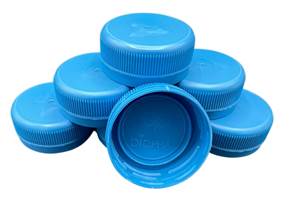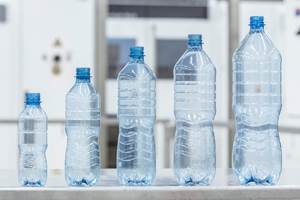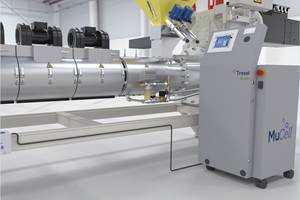Wood on Plastics - Electronics Remain a Growth Leader
The growth rate for the U.S. electronics industry decelerated during the second half of 2010. Growth was still positive, and it was certainly better than for other types of durable goods,
The growth rate for the U.S. electronics industry decelerated during the second half of 2010. Growth was still positive, and it was
certainly better than for other types of durable goods, but the rate of expansion slowed along with the cooling in the pace of the overall U.S. recovery.
Growth in the electronics industry is affected by the activity in the whole economy and in the major end-markets, but recent history shows that this industry’s growth increases at a higher rate during the cyclical highs, and doesn’t fall as far during the cyclical lows, compared with the rates for the total industrial sector.
This is the very definition of a “growth” industry, and the technology sector will remain one of the economy’s brightest patches for the foreseeable future. Levels of demand for many segments of electronics now exceed those seen before the recession, making this one of the few industries to have fully recovered and entered into the next phase of expansion. A strengthening U.S. economy will spur a re-acceleration in production of electronic products in 2011 and 2012. Our latest forecast calls for a gain of 6% to 8% in overall demand for electronic products.
Much of the attention in this industry is focused on consumer electronics (TVs, computers, smart phones, etc.), and here the outlook is very bright. While consumers have been reluctant to spend for many types of products, industrial output and retail sales of consumer electronics both have experienced solid growth. This indicates that the consumer electronics market remains in a rapid-evolution phase, and manufacturers are under tremendous competitive pressure to be first to market with unique and differentiated products.
A successful product in the consumer market quickly attracts copycat products from the competition, which results in rapid price erosion. To stay ahead of the competition, consumer manufacturers are continually forced to enhance their products or support emerging technologies. That leads to a sharp reduction in the consumer-product life cycle. These pressures favor plastics processors and other suppliers who can adjust quickly to changes in design, materials, and price pressures.
And while the consumer sector will continue to grab most of the headlines, the two main reasons for robust growth in electronics are: 1) electronic components continue to penetrate all segments of manufactured products; and 2) strong export demand. U.S. output of products such as testing devices, medical devices, automotive, appliances, and security systems will enjoy solid growth next year and beyond, but the rates of increase in both the number of units and the value of the electronic components that go into these goods will be even stronger.
So the outlook for the U.S. electronics market in 2011 and beyond is quite good, but the prospects for export markets are better. In fact, future growth for electronic products will be increasingly driven by demand in developing markets where rapid adoption of products such as mobile communication devices and consumer electronics continues at an accelerating pace. The global electronics industry will grow at an average rate above 7% during the next three years.
Design and early adoption of new electronic products will continue to be focused in the U.S. and Europe. However, the strongest growth for products that are first introduced in these two regions will more likely occur in Asia. One example is India, where demand for many types of consumer electronics is forecast at an annual average growth rate of 20% over the next three to five years.
WHAT IT MEANS TO YOU
- The market changes fast, as consumers tend to be fickle. Processors need to work with OEMs to enhance products or support emerging technologies such as connectivity and mobility.
- Environmentally sound disposal of outdated and broken electronics products will increasingly become an issue for processors and designers of these goods.
- The sources of materials used to manufacture electronics, and the ease with which these materials can be recycled, will also be increasingly important issues of which processors should be aware.
ABOUT THE AUTHOR
Bill Wood, an economist specializing in the plastics industry, heads up Mountaintop Economics & Research, Inc. in Greenfield, Mass. Contact BillWood@PlasticsEconomics.com.
Related Content
PHA Compound Molded into “World’s First” Biodegradable Bottle Closures
Beyond Plastic and partners have created a certified biodegradable PHA compound that can be injection molded into 38-mm closures in a sub 6-second cycle from a multicavity hot runner tool.
Read MoreFirst Water Bottles With Ultrathin Glass Coating
Long used for sensitive juices and carbonated soft drinks, KHS Freshsafe PET Plasmax vapor-deposited glass coating is now providing freshness and flavor protection for PET mineral water bottles.
Read MoreFoam-Core Multilayer Blow Molding: How It’s Done
Learn here how to take advantage of new lightweighting and recycle utilization opportunities in consumer packaging, thanks to a collaboration of leaders in microcellular foaming and multilayer head design.
Read MoreMultilayer Solutions to Challenges in Blow Molding with PCR
For extrusion blow molders, challenges of price and availability of postconsumer recycled resins can be addressed with a variety of multilayer technologies, which also offer solutions to issues with color, processability, mechanical properties and chemical migration in PCR materials.
Read MoreRead Next
Making the Circular Economy a Reality
Driven by brand owner demands and new worldwide legislation, the entire supply chain is working toward the shift to circularity, with some evidence the circular economy has already begun.
Read MoreBeyond Prototypes: 8 Ways the Plastics Industry Is Using 3D Printing
Plastics processors are finding applications for 3D printing around the plant and across the supply chain. Here are 8 examples to look for at NPE2024.
Read More






